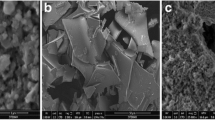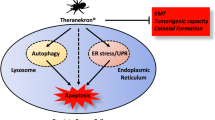Abstract
Prostate cancer (PCa) is the most commonly diagnosed cancer in men. The progression and invasion of PCa are normally mediated by the overexpression of chemokine receptors (CKRs) and the interaction between CKRs and their cognate ligands. We recently demonstrated that venom extracted from Walterinnesia aegyptia (WEV) either alone or in combination with silica nanoparticles (WEV+NP) mediated the growth arrest and apoptosis of breast cancer cells. In the present study, we evaluated the impact of WEV alone and WEV+NP on the migration, invasion, proliferation and apoptosis of prostate cancer cells. We found that WEV alone and WEV+NP decreased the viability of all cell types tested (PCa cells isolated from patient samples, PC3 cells and LNCaP cells) using an MTT assay. The IC50 values were determined to be 10 and 5 μg/mL for WEV alone and WEV+NP, respectively. WEV+NP decreased the surface expression of the CKRs CXCR3, CXCR4, CXCR5 and CXCR6 to a greater extent than WEV alone and subsequently reduced migration and the invasion response of the cells to the cognate ligands of the CKRs (CXCL10, CXCL12, CXCL13 and CXCL16, respectively). Using a CFSE proliferation assay, we found that WEV+NP strongly inhibited epidermal growth factor-mediated PCa cell proliferation. Furthermore, analysis of the cell cycle indicated that WEV+NP strongly altered the cell cycle of PCa cells and enhanced the induction of apoptosis. Finally, we demonstrated that WEV+NP robustly decreased the expression of anti-apoptotic effectors, such as B cell Lymphoma-2 (Bcl-2), B cell Lymphoma-extra large (Bcl-XL) and myeloid cell leukemia sequence-1 (Mcl-1), and increased the expression of pro-apoptotic effectors, such as Bcl-2 homologous antagonist/killer (Bak), Bcl-2-associated X protein (Bax) and Bcl-2-interacting mediator of cell death (Bim). WEV+NP also altered the membrane potential of mitochondria in the PCa cells. Our data reveal the potential of nanoparticle-sustained delivery of snake venom as effective treatments for prostate cancer.






Similar content being viewed by others
Abbreviations
- Bcl-2:
-
B cell Lymphoma-2
- NP:
-
Nanoparticles
- PCa:
-
Prostate cancer
- WEV:
-
Walterinnesia aegyptia venom
- WEV+NP:
-
Walterinnesia aegyptia venom combined with nanoparticles
References
Weihua Z, Lathe R, Warner M, Gustafsson JA (2002) An endocrine pathway in the prostate, ERbeta, AR, 5alpha-androstane-3beta, 17beta-diol, and CYP7B1, regulates prostate growth. Proc Natl Acad Sci USA 99(21):13589–13594
Attard G, Sarker D, Reid A, Molife R, Parker C, de Bono JS (2006) Improving the outcome of patients with castration-resistant prostate cancer through rational drug development. Br J Cancer 95:767–774
Bruckheimer EM, Kyprianou N (2000) Apoptosis in prostate carcinogenesis. A growth regulator and a therapeutic target. Cell Tissue Res 301:153–162
Kyprianou N, Tu H, Jacobs SC (1996) Apoptotic versus proliferative activities in human benign prostatic hyperplasia. Hum Pathol 27:668–675
Yoshie O, Imai T, Nomiyama H (2001) Chemokines in immunity. Adv Immunol 78:57–110
Arya M, Patel HRH, Williamson M (2003) Chemokines: key players in cancer. Curr Med Res Opin 19:557–564
Zheng K, Li HY, Su XL, Wang XY, Tian T, Li F, Ren GS (2010) Chemokine receptor CXCR7 regulates the invasion, angiogenesis and tumor growth of human hepatocellular carcinoma cells. J Exp Clin Cancer Res 29:31–37
Arya M, Patel HR, McGurk C, Tatoud R, Klocker H, Masters J, Williamson M (2004) The importance of the CXCL12–CXCR4 chemokine ligand–receptor interaction in prostate cancer metastasis. J Exp Ther Oncol 4:291–303
Qian Wu, Dhir Rajiv, Wells Alan (2012) Altered CXCR3 isoform expression regulates prostate cancer cell migration and invasion. Mol Cancer 11:3
Singh S, Singh R, Singh UP, Rai SN, Novakovic KR, Chung LW, Didier PJ, Grizzle WE, Lillard JW Jr (2009) Clinical and biological significance of CXCR5 expressed by prostate cancer specimens and cell lines. Int J Cancer 125(10):2288–2295
Ha HK, Lee W, Park HJ, Lee SD, Lee JZ, Chung MK (2011) Clinical significance of CXCL16/CXCR6 expression in patients with prostate cancer. Mol Med Rep 4(3):419–424
Singh S, Singh UP, Stiles JK, Grizzle WE, Lillard JW Jr (2004) Expression and functional role of CCR9 in prostate cancer cell migration and invasion. Clin Cancer Res 10(24):8743–8750
Kuwana T, Newmeyer DD (2003) Bcl-2-family proteins and the role of mitochondria in apoptosis. Curr Opin Cell Biol 15(6):691–699
Oltvai ZN, Milliman CL, Korsmeyer SJ (1993) Bcl-2 heterodimerizes in vivo with a conserved homolog, Bax, that accelerates programmed cell death. Cell 74:609–619
McDonnell TJ, Troncoso P, Brisbay SM et al (1992) Expression of the protooncogene Bcl-2 in the prostate and its association with emergence of androgen-independent prostate cancer. Cancer Res 52:6940–6944
Markland FS (2001) Novel Snake venom disintegrin that inhibits human ovarian cancer dissemination and angiogenesis in an orthotopic nude mouse model. Haemostasis 31:183–191
Badr G, Al-Sadoon MK, El-Toni AM, Daghestani M (2012) Walterinnesia aegyptia venom combined with silica nanoparticles enhances the functioning of normal lymphocytes through PI3K/AKT, NFκB and ERK signaling. Lipids Health Dis 11:27
Son DJ, Park MH, Chae SJ, Moon SO, Lee JW, Song HS, Moon DC, Kang SS, Kwon YE, Hong JT (2007) Inhibitory effect of snake venom toxin from Vipera lebetina turanica on hormone-refractory human prostate cancer cell growth: induction of apoptosis through inactivation of nuclear factor kappaB. Mol Cancer Ther 6(2):675–683
Barratt G (2003) Colloidal drug carriers: achievements and perspectives. Cell Mol Life Sci 60:21–37
Al-Sadoon MK, Abdel-Maksoud MA, Rabah DM, Badr G (2012) Induction of apoptosis and growth arrest in human breast carcinoma cells by a snake (Walterinnesia aegyptia) venom combined with silica nanoparticles: crosstalk between Bcl2 and caspase 3. Cell Physiol Biochem 30(3):653–665
Park MH, Jo MR, Won D, Song HS, Han SB, Song MJ, Hong JT (2012) Snake venom toxin from Vipera lebetina turanica induces apoptosis in colon cancer cells via upregulation of ROS- and JNK-mediated death receptor expression. BMC Cancer 12(1):228–236
Song JK, Jo MR, Park MH, Song HS, An BJ, Song MJ, Han SB, Hong JT (2012) Cell growth inhibition and induction of apoptosis by snake venom toxin in ovarian cancer cell via inactivation of nuclear factor κB and signal transducer and activator of transcription 3. Arch Pharm Res 35(5):867–876
Engl T, Relja B, Blumenberg C, Müller I, Ringel EM, Beecken WD, Jonas D, Blaheta RA (2006) Prostate tumor CXC-chemokine profile correlates with cell adhesion to endothelium and extracellular matrix. Life Sci 78(16):1784–1793
Prasad NK (2009) SHIP2 phosphoinositol phosphatase positively regulates EGFR-Akt pathway, CXCR4 expression, and cell migration in MDA-MB-231 breast cancer cells. Int J Oncol 34(1):97–105
Badr G, Lefevre EA, Mohany M (2011) Thymoquinone inhibits the CXCL12-induced chemotaxis of multiple myeloma cells and increases their susceptibility to Fas-mediated apoptosis. PLoS One 6(9):e23741
Oliva IB, Coelho RM, Barcellos GG, Saldanha-Gama R, Wermelinger LS, Marcinkiewicz C, Benedeta Zingali R, Barja-Fidalgo C (2007) Effect of RGD disintegrins on melanoma cell growth and metastasis: involvement of the actin cytoskeleton, FAK and c-Fos. Toxicon 50:1053–1063
Aggarwal H, Aggarwal A, Agrawal DK (2011) Epidermal growth factor increases LRF/Pokemon expression in human prostate cancer cells. Exp Mol Pathol 91(2):496–501
She QB, Solit DB, Ye Q, O’Reilly KE, Lobo J, Rosen N (2005) The BAD protein integrates survival signaling by EGFR/MAPK and PI3K/Akt kinase pathways in PTEN-deficient tumor cells. Cancer Cell 8(4):287–297
McEleny K, Coffey R, Morrissey C, Fitzpatrick JM, Watson RW (2004) Caffeic acid phenethyl ester-induced PC-3 cell apoptosis is caspase-dependent and mediated through the loss of inhibitors of apoptosis proteins. BJU Int 94:402–406
Chen YJ, Shiao MS, Hsu ML, Tsai TH, Wang SY (2001) Effect of caffeic acid phenethyl ester, an antioxidant from propolis, on inducing apoptosis in human leukemic HL-60 cells. J Agric Food Chem 49:5615–5619
Song JH, Kraft AS (2012) Pim kinase inhibitors sensitize prostate cancer cells to apoptosis triggered by Bcl-2 family inhibitor ABT-737. Cancer Res 72(1):294–303
Rasul A, Ding C, Li X, Khan M, Yi F, Ali M, Ma T (2012) Dracorhodin perchlorate inhibits PI3K/Akt and NF-κB activation, up-regulates the expression of p53, and enhances apoptosis. Apoptosis 17(10):1104–1119
Camandola S, Mattson MP (2000) Pro-apoptotic action of PAR-4 involves inhibition of NF-kappaB activity and suppression of BCL-2 expression. J Neurosci Res 61(2):134–139
Tsapakidis K, Vlachostergios PJ, Voutsadakis IA, Befani CD, Patrikidou A, Hatzidaki E, Daliani DD, Moutzouris G, Liakos P, Papandreou CN (2012) Bortezomib reverses the proliferative and antiapoptotic effect of neuropeptides on prostate cancer cells. Int J Urol 19(6):565–574
Park MH, Son DJ, Kwak DH, Song HS, Oh KW, Yoo HS, Lee YM, Song MJ, Hong JT (2009) Snake venom toxin inhibits cell growth through induction of apoptosis in neuroblastoma cells. Arch Pharm Res 32(11):1545–1554
Thornberry NA, Lazebnik Y (1998) Caspases: enemies within. Science 281:1312–1316
Salido M, Gonzalez JL, Vilches J (2007) Loss of mitochondrial membrane potential is inhibited by bombesin in etoposide-induced apoptosis in PC-3 prostate carcinoma cells. Mol Cancer Ther 6(4):1292–1299
Allen TM, Cullis PR (2004) Drug delivery systems: entering the mainstream. Science 303:1818–1822
Langer R, Tirrell DA (2004) Designing materials for biology and medicine. Nature 428:487–492
Davis ME, Chen Z, Shin DM (2008) Nanoparticle therapeutics: an emerging treatment modality for cancer. Nat Rev Drug Disc 7(9):771–782
Moorthi C, Manavalan R, Kathiresan K (2011) Nanotherapeutics to overcome conventional cancer chemotherapy limitations. J Pharm Pharm Sci 14(1):67–77
Kolluru LP, Rizvi SA, D’Souza M, D’Souza MJ (2012) Formulation development of albumin based theragnostic nanoparticles as a potential delivery system for tumor targeting. J Drug Target. Oct 5
Hillaireau H, Couvreur P (2009) Nanocarriers’ entry into the cell: relevance to drug delivery. Cell Mol Life Sci 66:2873–2896
Nam HY, Kwon SM, Chung H, Lee SY, Kwon SH, Jeon H, Kim Y, Park JH, Kim J, Her S, Oh YK, Kwon IC, Kim K, Jeong SY (2009) Cellular uptake mechanism and intracellular fate of hydrophobically modified glycol chitosan nanoparticles. J Control Release 135:259–267
Koo H, Huh MS, Sun IC, Yuk SH, Choi K, Kim K, Kwon IC (2011) In vivo targeted delivery of nanoparticles for theranosis. Acc Chem Res 44:1018–1028
Lim SM, Kim TH, Jiang HH, Park CW, Lee S, Chen X, Lee KC (2011) Improved biological half-life and anti-tumor activity of TNF-related apoptosis-inducing ligand (TRAIL) using PEG-exposed nanoparticles. Biomaterials 32:3538–3546
Koppolu B, Bhavsar Z, Wadajkar AS, Nattama S, Rahimi M, Nwariaku F, Nguyen KT (2012) Temperature-sensitive polymer-coated magnetic nanoparticles as a potential drug delivery system for targeted therapy of thyroid cancer. J Biomed Nanotechnol 8:983–990
Chen D, Tang Q, Li X, Zhou X, Zang J, Xue WQ, Xiang JY, Guo CQ (2012) Biocompatibility of magnetic Fe(3)O(4) nanoparticles and their cytotoxic effect on MCF-7 cells. Int J Nanomedicine 7:4973–4982
Acknowledgments
This work was supported by the National Plan for Science and Technology (NPST) funded by the King Abdulaziz City for Science and Technology (KACST) through project number 10-BIO969-02. The authors acknowledge Dr. Ahmed El-Toni at the King Abdullah Institute for Nanotechnology, King Saud University, for loading venom onto the silica nanoparticles. The authors also acknowledge Dr. Doaa Maximous at Surgical oncology Department, South Egypt Cancer Institute, Assiut University, Assiut, Egypt, for kindly provided the prostate cancer samples.
Conflict of interest
The authors declare that they have no conflicts of interest.
Ethical approval
The authors state that the manuscript has not been published or submitted elsewhere, state that the work complies with the ethical policies of the journal and state that the work has been conducted under internationally accepted ethical standards after relevant ethical review.
Author information
Authors and Affiliations
Corresponding author
Rights and permissions
About this article
Cite this article
Badr, G., Al-Sadoon, M.K., Rabah, D.M. et al. Snake (Walterinnesia aegyptia) venom-loaded silica nanoparticles induce apoptosis and growth arrest in human prostate cancer cells. Apoptosis 18, 300–314 (2013). https://doi.org/10.1007/s10495-012-0787-1
Published:
Issue Date:
DOI: https://doi.org/10.1007/s10495-012-0787-1




